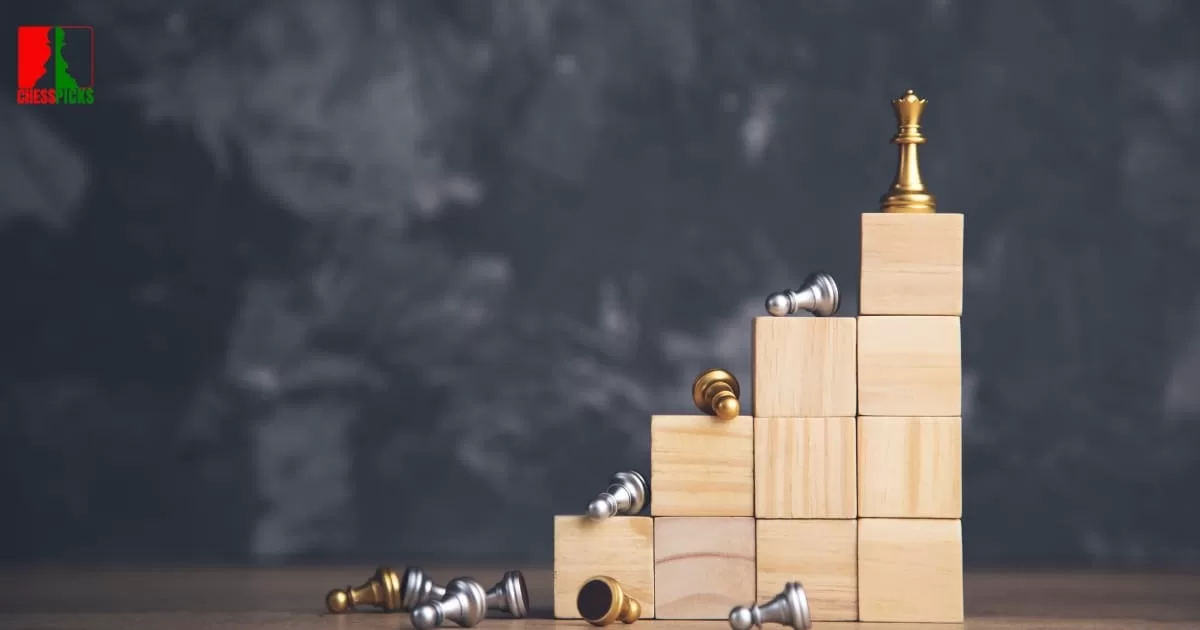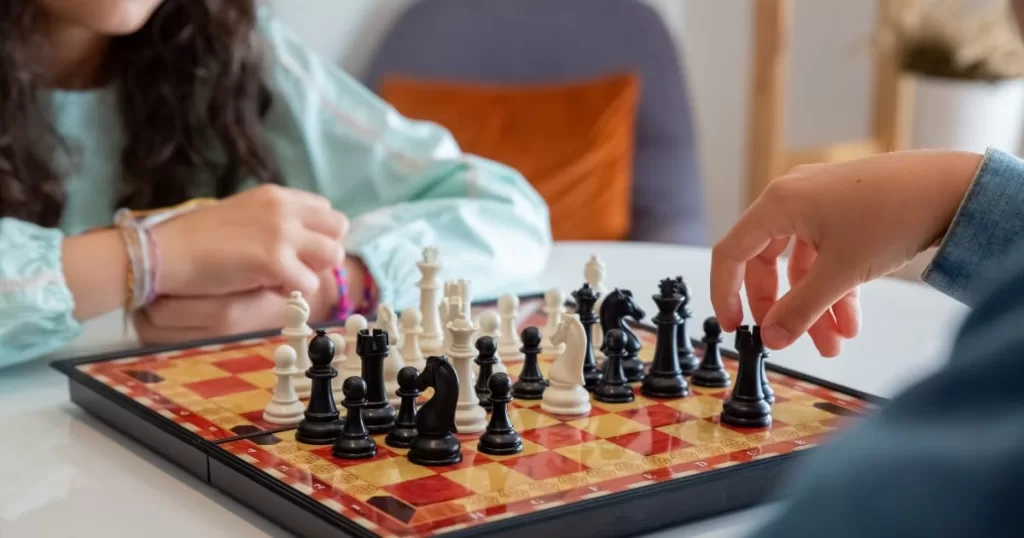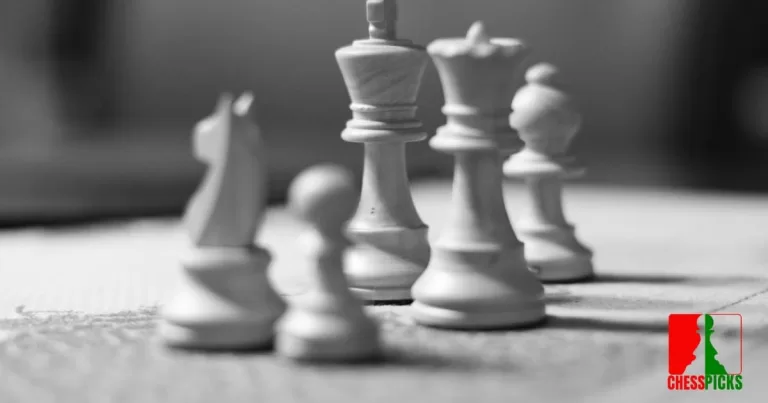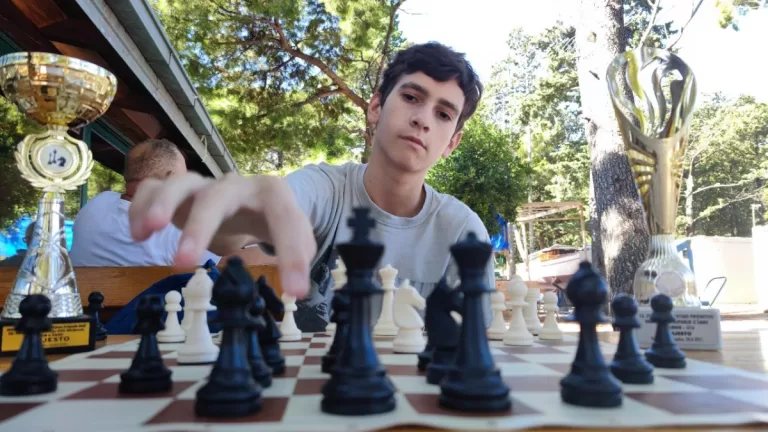
What Is Considered a Good ELO Score for Recreational Players? (Is 1400 Good?)
You know what sucks?
Being stuck at a chess rating that makes you feel like a loser.
You’ve been playing for years, studying the game, practicing the puzzles, and reading chess books, but you can’t seem to break past the 1400 barrier.
I get it.
In the back of your mind, you wonder, “Am I not smart enough for this game?“
Let me stop you right there.
Your skill level has nothing to do with intelligence. Chess prowess comes from practice, not inborn talent. If you’ve made it to 1400, you should feel proud. That rating puts you in the top third of recreational players. No small feat! But that doesn’t make the frustration go away, does it?
The truth is, an ELO score doesn’t define your value as a player. So let go of unrealistic rating goals that leave you feeling inadequate.
Instead, focus on growth and enjoying the game. Find fulfillment in small wins, like finally nailing down a tricky opening. Or teaching your niece those chess basics you’ve worked so hard to understand yourself.
Progress takes time. But you’ve already come this far.
So silence that inner critic, and let’s talk about what makes for a “good” rating at your level.
Sounds good?
Then let’s get started.
What is an ELO Rating?
ELO ratings are a dynamic system used to measure chess skills. Developed by Arpad Elo, the system assigns a numerical score to each player, reflecting their relative strength.
Players gain or lose points based on their results against others, with victories against higher-rated players resulting in a larger gain and vice versa.
This creates a dynamic system where players constantly strive to improve their ratings. ELO ratings are generally categorized into classifications that reflect a player’s overall proficiency:
- Beginner: < 1200 ELO
- Intermediate: 1200-1600 ELO
- Advanced: 1600-2000 ELO
- Expert: 2000+ ELO
It’s important to note that different platforms use slightly different ELO calculations and scales. For example, Chess.com uses a Glicko-2 system, while FIDE (the International Chess Federation) uses a traditional Elo rating system. These differences may lead to slight variations in individual ratings across platforms.

Defining “Good” for Recreational Players
What constitutes a “good” ELO score for a recreational player depends on several factors, including:
- Personal goals: Are you simply looking to enjoy the game and improve at your own pace? Or do you aspire to participate in tournaments and compete against other players?
- Playing experience: How long have you been playing chess? How often do you play and practice?
- Enjoyment of the game: Do you prioritize having fun and learning over achieving a specific rating?
A recreational player’s expectations and definition of “good” will differ significantly from those of a professional or competitive player.
The key takeaway is that a good ELO score is a relative measure, and its value should be assessed within the context of your individual goals and enjoyment of the game.
Analyzing a 1400 ELO Score
According to the USCF Rating distribution chart, a 1400 ELO score falls within the “intermediate” player category.
This means you have likely mastered the basic rules, tactics, and opening principles. You can identify simple threats and opportunities on the board, and you are capable of holding your own against players of similar ratings.
Here are some specific examples of what a 1400 player can typically achieve:
- Defeat most casual players and beginners.
- Participate in local chess clubs and tournaments.
- Enjoy competitive games with other 1400-1600-rated players.
- Continue improving their skills and aiming for higher ELO goals.
So, is 1400 Good? The Answer
Yes, 1400 is considered a solid intermediate classification. At 1400 ELO, a player has grasped deeper insight into the game compared to a casual beginner.
A 1400 ELO player utilizes tactics appropriately, develops positions intelligently by identifying opportunities and weaknesses, and has knowledge of common opening principles.
Whether a 1400 ELO score is “good” for you as a recreational player depends entirely on your own definition of “good.” If you’re enjoying the game, learning new skills, and achieving your individual goals, then your ELO score is irrelevant.
However, if you aspire to reach higher levels of competitive play, achieving a 1400 rating could be a stepping stone to further improvement.
An ELO between 1200 and 1600 or 1700 indicates good skills for casual play. This shows a player has progressed past the beginner level and developed an intermediate understanding of tactics, positional play, openings and other fundamental chess knowledge.
The focus for recreational players should be on enjoying the game, learning continuously, and celebrating individual achievements regardless of the number on their ELO rating.
Additional Points to Consider:
- Improvement takes time and practice: Don’t get discouraged if your ELO fluctuates. Consistent practice and dedication are key to long-term improvement.
- Resources for improvement: Utilize online resources, chess books, and training tools to enhance your skills. Chess.com lessons and lichess.org are good starting points for beginners.
- Join a chess club or participate in tournaments: Immerse yourself in the chess community and learn from other players.
Final Thoughts
The concept of a “good” ELO score for recreational players is subjective and depends on individual goals and enjoyment of the game. While a 1400 rating indicates an intermediate skill level, it is only one aspect of your chess journey.
Achieving 1400 ELO indicates key milestones in understanding the game more deeply. While ratings above 1600 denote considerably more advanced expertise, a 1400 ELO recreational players can feel gratified while still seeking new goals to strengthen their developing skills.
Embrace the learning process, celebrate your achievements, and enjoy the beauty and complexity of this timeless game. Remember, the true value of chess lies not in the numbers, but in the joy of the game itself.
Frequently Asked Questions (FAQs)
What is the ELO rating system?
The ELO rating system is a method for calculating the skill level of players in competitive games. It was originally designed for chess but is now used in various other games as well.
How does the ELO rating system work?
The ELO rating system assigns a numerical rating to each player, which represents their skill level. When two players with different ELO ratings compete against each other, the outcome of the game (win, loss, or draw) affects their ratings. A win against a higher-rated player results in a larger increase in rating, while a loss to a lower-rated player leads to a greater decrease in rating.
What factors affect ELO scores in recreational play?
Several factors can influence ELO scores in recreational play, including the skill level of opponents, the number of games played, the recent performance of the player, and the variability of results.
What is the range of ELO scores in recreational play?
ELO scores in recreational play can vary widely depending on the game and the skill level of the players. Generally, scores can range from below 1000 for beginners to over 2000 for highly skilled players.
How can ELO scores be interpreted?
ELO scores provide a relative measure of skill level. A higher ELO score indicates a higher skill level, while a lower score suggests a lower skill level. The difference in ELO ratings between two players can also provide an estimation of their expected win probabilities in a game.
Can ELO scores be compared across different games?
ELO scores cannot be directly compared across different games, as the rating systems and scales may differ. Each game has its own unique ELO rating system.
How can I improve my ELO score?
To improve your ELO score, you can set goals for yourself, focus on strategies to enhance your gameplay, analyze and learn from your losses, and seek guidance from experienced players or resources.
What are common misconceptions about ELO scores?
One common misconception is that ELO scores solely represent a player’s win-loss record. In reality, ELO scores consider the skill level of opponents and the outcome of games. Another misconception is that ELO scores are static and cannot change over time, while in fact, they can fluctuate based on performance.
Are there tools or resources available to track ELO progress?
Yes, some online platforms and apps allow players to track their ELO scores and monitor their progress over time. These tools often provide additional statistics and analysis to help players understand their strengths and weaknesses.
Why are ELO scores important in recreational play?
ELO scores are important in recreational play as they provide a measure of skill level, help in matchmaking with players of similar abilities, motivate players to improve their performance, and allow for fair and balanced competition.




Leave a Comment